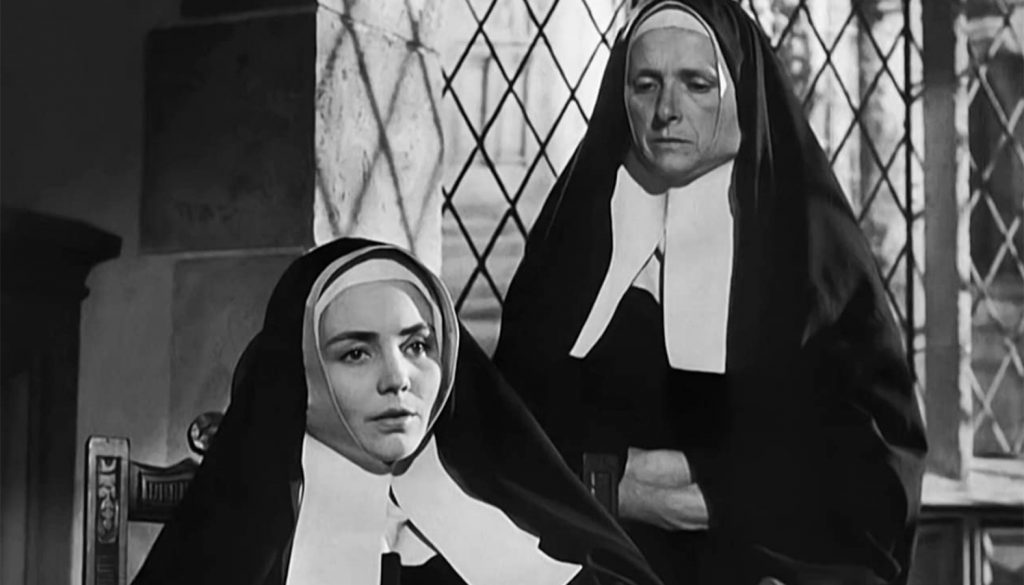Advent is about the light shining in darkness. Lent is about the human condition.
The message delivered by our contemporary world is: You can have it all. You can have things your way. You can outwit death by engineering your life.
That cross marked on our foreheads last Wednesday delivers a very different message: Ashes to ashes. Dust to dust.
Feb. 11 was the optional memorial of Our Lady of Lourdes, and as Lent approached I thought to watch the old black-and-white movie, “The Song of Bernadette” (1943). Based on the popular Franz Werfel novel, the film stars a surprisingly affecting Jennifer Jones in the title role.
Never mind that Bernadette is 14 as the story begins and Jones was 24, with the kind of perfectly sculpted eyebrows, clear skin, and well-kept hands unlikely to have been found among the 19th-century French peasantry.
Bernadette suffers from asthma and lives with her family in a cramped, airless hovel. At school, she readily agrees to being “stupid.” There, so unlearned in her Catechism that she’s unable to define the Trinity, she is terrorized by the spiteful martinet Sister Marie-Thérèse Vauzou.
You know the story: Bernadette has a vision at the local grotto of “a lady” all in white with a blue girdle and a golden rose on each foot. At the direction of this ethereal vision of femininity, Bernadette digs in the ground with her hands and out gushes the spring of Massabielle.
A blind man is restored to sight. A convulsing infant, his legs paralyzed, is restored to health. The story makes the newspapers and pilgrims start appearing in Lourdes.
And when “the lady” reveals herself to be the Blessed Virgin Mary by announcing, “I am the Immaculate Conception,” Bernadette has no idea what is meant.
But she never for an instant wavers from her love for Our Lady. Nor will she lie. She’s bullied, interrogated, threatened with prison and mental institutions. The forbidding Sister Marie-Thérèse chillingly informs Bernadette that she’s not fooled by her “wiles” and that in the olden days she, Bernadette, would have been burned at the stake.
Bernadette wants nothing more than to take a job as a housemaid and live in anonymity. “Can you imagine yourself as a nun some day?” the kindly Father Peyramale inquires. “Dear God, no,” she replies. “That’s far above me.”
“To you the most Blessed Virgin condescended,” Father remonstrates. “This places a responsibility on you. You can’t suddenly play truant and run away from your destiny. … Heaven chose you and now there’s nothing left for you but to choose heaven.”
Thus, like a lamb to the slaughter, Bernadette is led off to the convent, where the grim and emotionally disordered Sister Marie-Thérèse is Novice Mistress.
When our young heroine starts limping, she’s accused by her superiors of faking an injury in order to gain attention. In fact, she’s been suffering in silence from tuberculosis of the bones. At last she exposes her leg, disfigured by the hideous, excruciatingly painful tumor that she’s heretofore concealed from the whole convent.
Sister Marie-Thérèse repents, realizing that all along she’s simply been jealous of Bernadette. With her grim sacrifices, hardened heart, and lack of love, the sister had been convinced all along that only she knew the meaning of suffering.
Why not go to the spring that you yourself discovered, her superiors now urge Bernadette. You could be healed. The waters will heal you!
But as the Blessed Virgin tells her, “I cannot promise you happiness in this world — only in the next.” So Bernadette declines. God’s will is for her to die now.
“The spring is not for me,” she explains. “The spring is not for me.”
How does that pan out in our own lives?
Lent is a good time to remember the mother who prays for her addict son to be healed: her kid may continue to use — but through her prayers, some other mother’s daughter gets clean.
We plant a garden in back of our apartment building — and before it blooms the landlord jacks up the rent and we must leave our labor of love to the other tenants. The spring is not for me.
We discover the cure for cancer, then die of a heart attack. The spring is not for me.
The spring was not for Bernadette, but the spring may well have been for Sister Marie-Thérèse, who in one way is the real protagonist of the story of Lourdes.
Bernadette from the beginning was pure of heart, chaste, holy. Through that purity — and Bernadette’s suffering — Sister Marie-Thérèse died to her old identity as a miserly, rule-abiding Pharisee and was born anew into humility, gratitude, and love.
May the same be true for us.
Lent is a good time to remember that as he was dying on the cross, Christ didn’t “have” the resurrection.
But we do. He left that spring for us.

